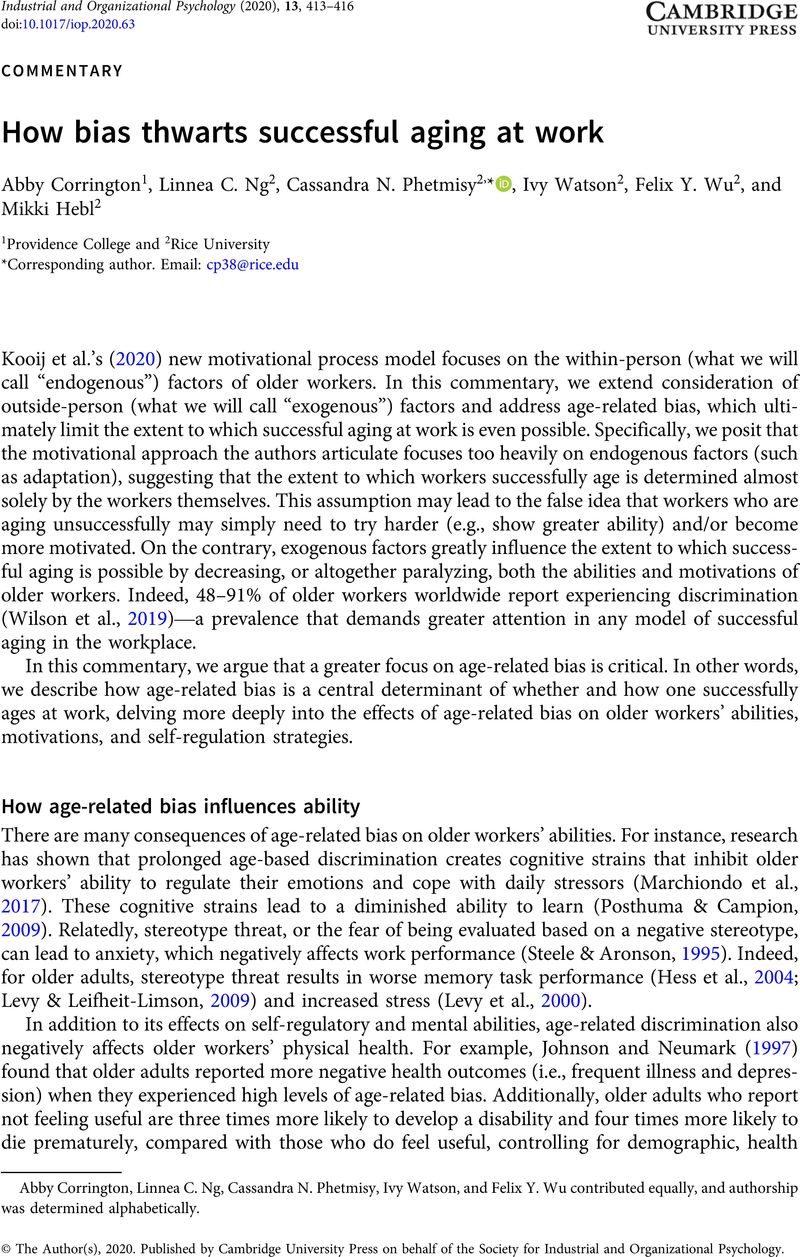Crossref Citations
This article has been cited by the following publications. This list is generated based on data provided by Crossref.
Pak, Karen
Furunes, Trude
and
De Lange, Annet H.
2022.
Age Discrimination and Employability in Healthcare Work: A Double-Edged Sword for Older Workers?.
Sustainability,
Vol. 14,
Issue. 9,
p.
5385.



